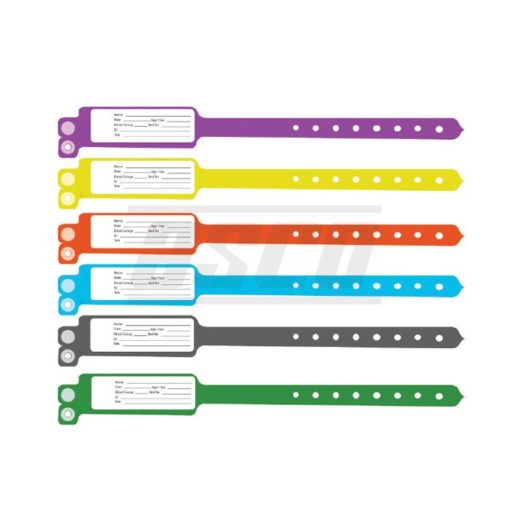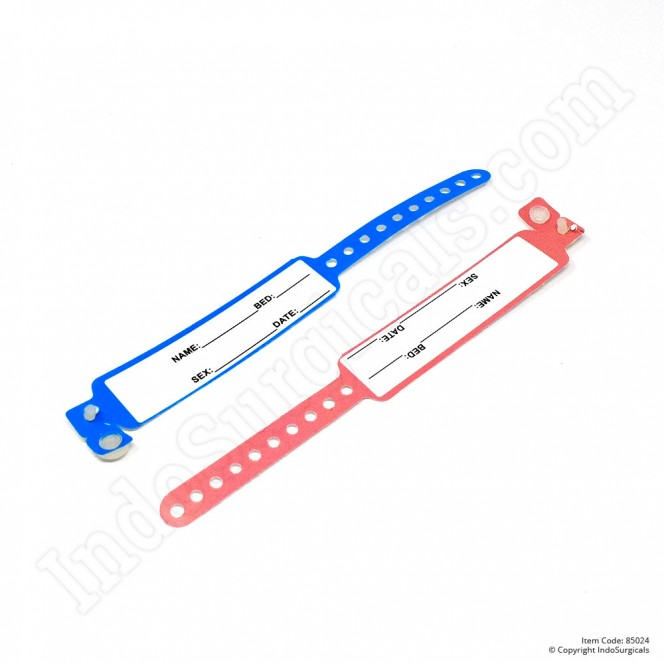Exploring the Various Sorts Of Patient Identification Band Utilized in Medical Facilities
In the detailed world of medical care, the crucial role of Patient Identification bands commonly goes undetected. These bands, varying from straightforward paper wristbands to sophisticated RFID bands, create the foundation of Patient safety and security protocols, making certain precision in Patient Identification.
Understanding the Significance of Patient Identification Bands
While they might seem like simple devices, Patient Identification bands play a vital role in clinical centers. These bands offer as an important device for confirming Patient identity, stopping clinical mistakes connected to misidentification. Patient Identification bands likewise help in improving administrative tasks, ensuring exact record-keeping and payment.
Standard Paper Wristbands: Their Usage and Limitations
Standard paper wristbands have been a staple in Patient Identification throughout different medical facilities. While their usage prevails, they nurture certain restrictions that might impact their effectiveness in Patient administration. This section will certainly concentrate on the scope of their application and the inherent drawbacks related to their use.
Paper Wristbands: Usage Range
In the realm of Patient Identification, paper wristbands have long held a critical role. These bands are normally utilized in outpatient setups, where the Patient's remain is short-term. The wristbands contain vital information such as the Patient's name, date of birth, and an unique Identification number. This straightforward, yet effective system, enables physician to swiftly and precisely determine clients, making certain the correct treatment is administered. Paper wristbands are also used in emergency situation scenarios, where fast Identification is paramount. Their usage reaches occasions like blood donation drives and mass inoculation programs, additionally emphasizing their flexibility. In spite of innovations in innovation, the simple paper wristband continues to be a trusted and cost-effective service for Patient Identification in different healthcare situations.
Limitations of Paper Wristbands
Regardless of their extensive use, paper wristbands are not without their disadvantages. Their physical resilience is one of the considerable limitations. Exposure to water, sweat, or misuse can make them unreadable or perhaps create them to degenerate. In addition, paper wristbands typically lack the technical capacities of even more contemporary options, such as barcoding or RFID chips, limiting their functionality to just presenting written info. The failure to upgrade or customize the data on the wristband is another drawback. Furthermore, if the info is handwritten, legibility can be endangered, leading to potential misidentification. Ultimately, paper wristbands can trigger pain or skin irritability to some individuals, especially when put on for extended durations.
Barcoded Wristbands: Innovations in Patient Identification
While Patient Identification has actually long been an important element of health care, the advent of barcoded wristbands symbolizes a substantial jump forward. These bands take advantage of the simpleness of barcoding technology, permitting for Patient details to be quickly scanned and accessed. They boost the speed and precision of Patient Identification, reducing the threat of medical mistakes associated to misidentification.
Radio Regularity Identification (RFID) Bands: a Step Towards Futuristic Healthcare
The advancement of Patient Identification bands has actually brought about the development of Radio Frequency Identification (RFID) Bands (patient identification band). These cutting-edge tools present essential benefits for health care centers, using a more effective and technically advanced means of Patient Identification. The execution of RFID in healthcare is a significant step towards a more futuristic method to Patient management and safety
Comprehending RFID Bands

RFID Bands: Trick Advantages
Embracing a future where technology and healthcare merge, superhigh frequency Identification bands supply a number of key advantages. Mainly, these bands enhance Patient safety and security by giving precise, immediate Identification, consequently minimizing clinical mistakes. RFID bands can keep a vast quantity of Patient information, including case history and allergies, allowing customized care. content They additionally improve management tasks, as the automated information entry replaces hands-on processes, improving efficiency and reducing documentation. In addition, RFID bands provide real-time tracking of individuals, crucial in risky atmospheres such as surgery or intensive care. Lastly, these bands are sturdy and resistant to ecological elements, making sure consistent capability. On the whole, RFID bands represent a significant innovation in Patient Identification innovation, profiting both people and health care suppliers.
Carrying Out RFID in Medical Care
As we enter a technically advanced era, the execution of RFID bands in healthcare ends up being increasingly important. These bands offer a seamless method to track and determine clients, guaranteeing their safety and boosting efficiency in treatment procedures. RFID bands provide various benefits over conventional Identification techniques. They can store a huge quantity of information, consisting of the Patient's case history and therapy strategies, which can be conveniently accessed by healthcare companies. This data helps doctors make informed choices pertaining to the Patient's treatment plan. RFID bands lower medical mistakes by providing precise Patient Identification, which is crucial in stopping misdiagnosis or wrong medicine administration. Therefore, the implementation of RFID bands is a substantial step in the direction of improving Patient safety and security and health care delivery.

Color-Coded Wristbands: Assisting in Quick and Accurate Medical Diagnosis
In the dynamic environment of a clinical center, color-coded wristbands have actually become essential tools for swift and accurate Identification of an individual's medical problem. These wristbands, put on by patients, bring particular colors that represent different clinical problems or statuses. Red could indicate allergic reaction threats, while yellow may represent a loss risk. This system is designed to supply instant visual hints to health care service providers, boosting Patient security and care top quality. In emergency circumstances, the use of these wristbands enables fast decision-making. Nonetheless, the performance of color-coded wristbands depends upon the harmony of color analysis throughout health care establishments, needing usual requirements for regular application.
Approaches for Reliable Execution and Management of Patient ID Bands
Accomplishing optimal use of Patient Identification bands demands why not try here a well-structured approach for their execution and monitoring. Patient education is also essential; clients should understand the objective of the bands and the requirement for their continuous wear. It's vital to have a backup strategy in location, such as barcode scanning or biometrics, to guarantee that Patient Identification is never jeopardized.
Final thought
Patient Identification bands are crucial in clinical facilities to ensure safety and security and accuracy. Typical paper, barcoded, RFID, and color-coded wristbands each hold distinct benefits, ranging from cost-effectiveness to innovative data storage space and immediate clinical alerts. straight from the source Efficient implementation and administration of these bands can significantly decrease medical mistakes, boost effectiveness, and boost overall Patient care. Therefore, understanding and using these Identification tools is paramount for maintaining high criteria in healthcare.
These bands, differing from basic paper wristbands to sophisticated RFID bands, form the backbone of Patient safety procedures, ensuring precision in Patient Identification.The evolution of Patient Identification bands has actually brought concerning the appearance of Radio Frequency Identification (RFID) Bands. Generally, RFID bands represent a considerable development in Patient Identification innovation, profiting both people and health care service providers.
RFID bands decrease clinical mistakes by offering exact Patient Identification, which is important in protecting against misdiagnosis or incorrect medication administration. Patient education and learning is additionally vital; people must recognize the objective of the bands and the need for their consistent wear.